Teen travelers who want adventure are increasingly adding Thailand to their bucket list of places where they must visit. In a recent U.S. News and World Report survey, the nation ranked fifth in the world for adventure. That’s good news for thrill-seeking teenagers traveling to Thailand this coming summer.
Thailand is my personal favorite adventure travel destination that Rustic Pathways travels to. It has everything from rock climbing, surfing, rafting, hiking, and more. Here are a few of the great adventure travel in Thailand programs for teens available this summer:
Featured Teen Programs In Thailand
Thailand: Thai Elephant Conservation Project
Care for elephants while exploring Thai culture
Age 12-21
$2,995
A popular program choice is the action-packed Thailand Adventurer trip. It has a little bit of everything – adrenaline-pumping thrills, conservation lessons, cultural activities, and plenty of time outdoors with animals and nature.
Southeast Asian Regional Manager Keegan Kennedy says the program tends to attract gungho teens who have a variety of interests. One of the highlights is a chance to try rock climbing at one the most famous climbing destinations in the world. In southern Thailand, the Tonsai and Railay Bays are surrounded by cliffs on all sides. At this site climbers of all different ability levels scale limestone karsts that overhang the beach.
Here are more details about the adventure programs and Thailand tours available this summer to get you excited to visit Thailand, the land of smiles.
In This Guide


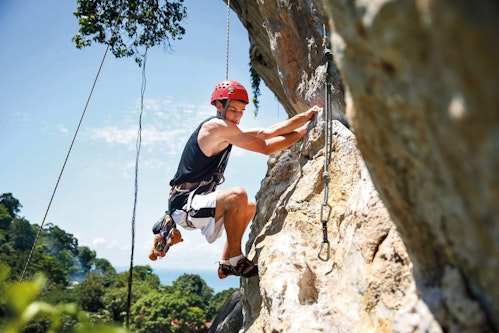
Exploring Northern Thailand: Chiang Mai and Chiang Rai
Cultural Immersion in Chiang Mai
Students begin their journey in Chiang Mai, which is the second largest city in Thailand and the former seat of the Lanna Kingdom. One of the first activities is an introduction to an important cultural aspect of Thai life – its food.
- Thai Cooking Class: Teens learn to prepare traditional dishes using herbs and spices native to the local culture.
- Night Markets: Bustling markets where students can try street food, shop for souvenirs, and engage with local guides. A visit to a night market is the adventure your taste buds have been waiting for.
After getting their fill, students continue their cultural lessons by taking a class in Muay Thai or Thai kickboxing.
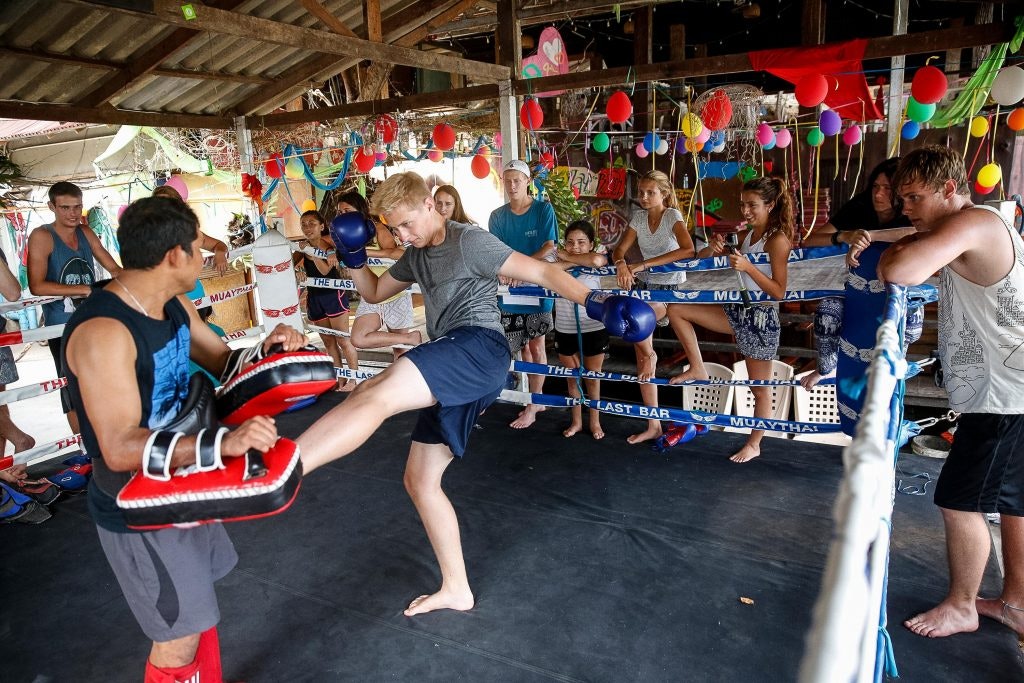
Adventure Among Northern Landscapes
Chiang Mai is surrounded by stunning natural attractions and mountain scenery:
- Sticky Waterfalls (Bua Tong): Unique waterfalls with rocks that allow visitors to climb safely.
- Limestone Caves in Chiang Dao: Sacred caves featuring Buddha statues and ancient shrines.
- National Parks: Visits to Doi Suthep-Pui National Park, a biodiversity hotspot with hiking trails and rare species.
Students also take part in adrenaline-packed activities, including white-water rafting on the Mae Tang River and ziplining high above the forests. These activities push teens to conquer fears and embrace new challenges.

Lessons in Conservation
Teens explore environmental topics taught by ecologists from Chiang Mai University, such as the impact of climate change on local ecosystems. They also visit Wat Doi Suthep, one of Thailand’s most sacred religious sites.
Wat Doi Suthep is carved out of red clay soil and has deep tranquil waters amid the cliffs. The site includes an inflatable jungle gym that gives the students a water experience that they’ll love. It’s a grin-producing wild-and-wet day before the students prepare to learn about an essential topic – animal conservation.

Elephant Conservation: A Highlight of Thai Adventures
About midway through their trip, students head to an elephant sanctuary to learn about the importance of animal welfare and conservation. The experience includes:
- Observing elephants in their natural habitat.
- Assisting with food preparation and cleaning.
- Discussions on the challenges of conserving such majestic animals.
The sanctuary allows students to see an elephant herd in its natural habitat and to partake in caretaking activities for the gentle giants, such as food preparation and cleaning. Kennedy said it’s complicated work to conserve such large and high maintenance animals, so they discuss the pros and cons of different approaches.
After saying farewell to the elephants and their caregivers, the students take a scenic ride down a jungle river, and then return to Chiang Mai. They start the next morning by taking a bicycle ride through the outskirts of the city before it’s time to head south to Bangkok.
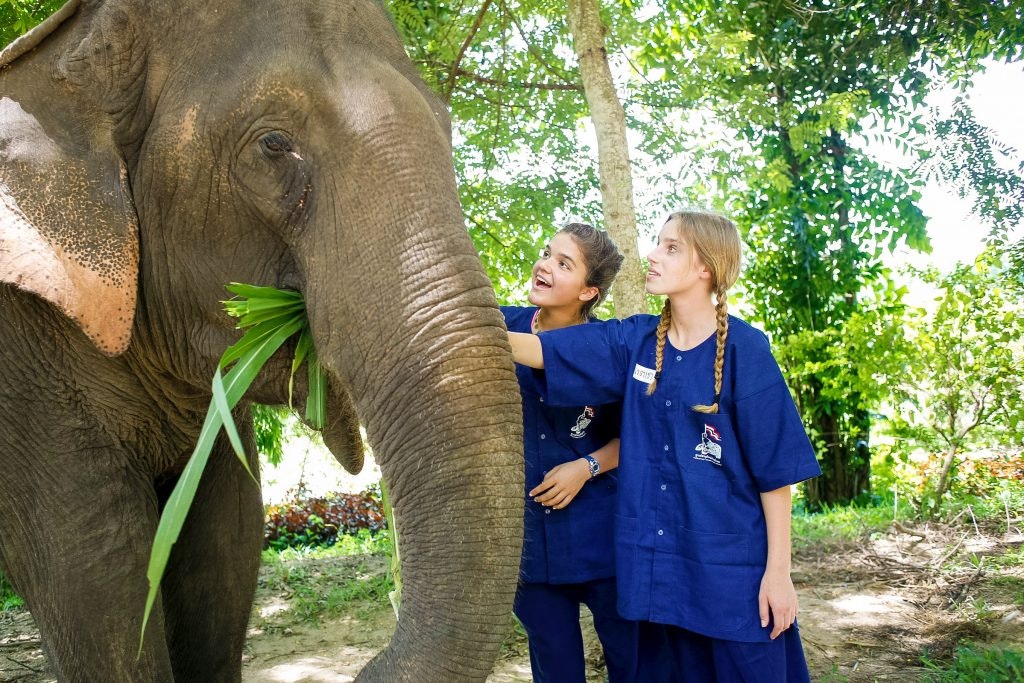
Southern Thailand: Beaches, Islands, and Rural Communities
Vibrant Bangkok: A Gateway to Adventure
The trip continues to Bangkok, where students visit:
- The Grand Palace: A stunning religious site and royal residence steeped in history.
- Floating Markets: Unique marketplaces where vendors sell goods directly from boats.
- Siam Square: A bustling hub for shopping and dining.
After finishing lessons about Bangkok’s past, the students travel to the Krabi province in Southern Thailand. This is where they will have the chance to try rock climbing.
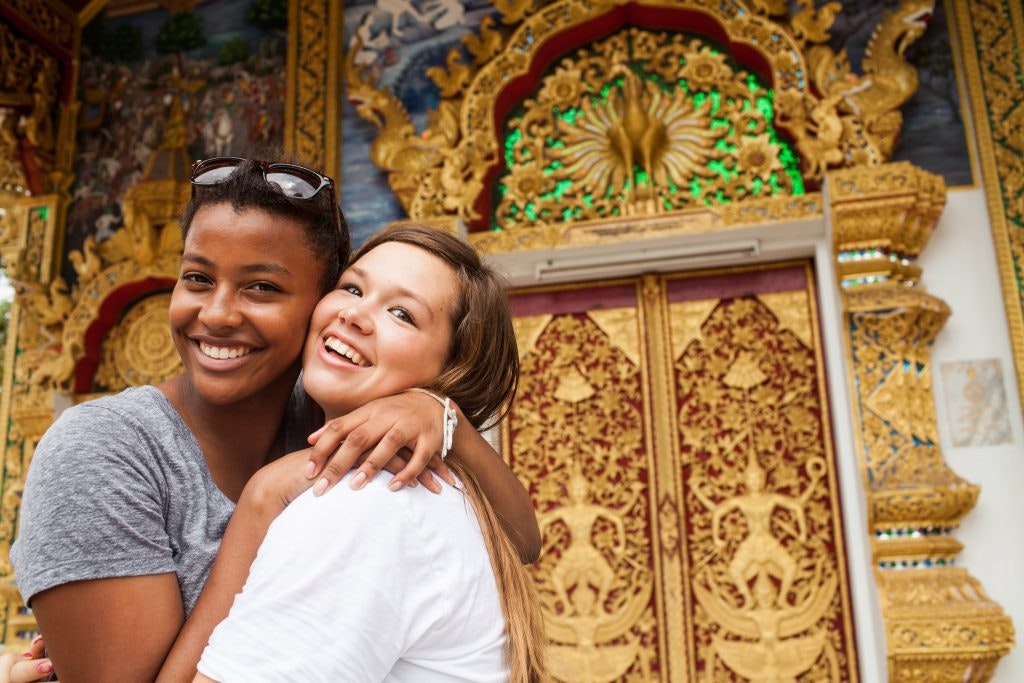
Relaxation and Thrills in Southern Thailand
In Phuket and the west coast, students explore pristine beaches, limestone cliffs, and turquoise waters. Activities include:
- Island Hopping: Traveling by longtail boats to nearby islands for snorkeling and swimming.
- Rock Climbing: Tonsai and Railay Bays offer some of the world’s best climbing spots.
- Local Family Visits: Engaging with rural Thailand communities to learn about everyday life.
The teens will also take a longtail boat ride to nearby islands and have time to snorkel, swim and enjoy the beach. The deep blue waters are teeming with a diversity of marine life and vibrant coral reefs.
As the students wind down their trip, they’ll have time to reflect and relax. The mother of Rustic alumna Madison Jennings said as the trip concluded she realized what an unforgettable experience it was for her daughter. Looking back, she is glad that her daughter had the chance to see such an incredible region of the world.
“The friends she made, the elephants she touched, the people she interacted with, the culture she absorbed… all were gifts to her that she will treasure forever,” Kelly Jennings said.
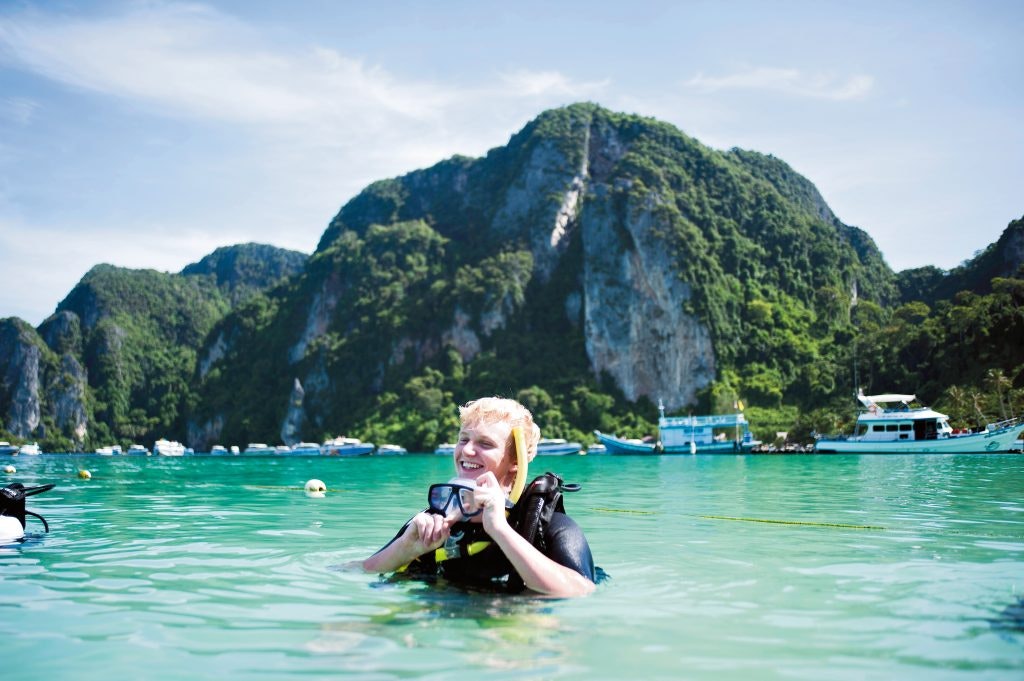
Practical Travel Tips for Thailand Tours
Preparing for Your Trip
- Entry Requirements: Ensure all documents are ready before you enter Thailand.
- Purchase Travel Insurance: Always arrange reliable coverage before departure.
- Currency: The Thai Baht is widely used, and many places accept credit cards.
Staying Safe and Comfortable
- Tipping: It’s customary to tip tour guides and service staff.
- Most Hotels: Accommodations often include amenities like Wi-Fi (internet access) and meals.
- Rainy Season: Expect the most rain during monsoon months but cooler temperatures.
- Sanitation: Remeber to bring your own toilet paper with you, especially in rural Thailand. Be prepared for the occasional squat toilets.
- Water: A reusable water bottle is essential when traveling around Thailand. While some tap water is safe to drink, it’s always a good practice to use bottled water and refill a personal bottle when traveling to rural areas.
For more details about this summer’s programs, visit our Thailand Tour Page.
Related: Frequently asked questions about Rustic Pathways’ Thailand programs


